Context
I ran a dating service in 2021 - 2022 that organized 2,961 in-person dates. It did not succeed as a viable business, but produced some interesting data, which I am sharing here.
All results in this post can be reproduced with this dataset. And you can interactively play around with a subset of the data here.
You might also be interested in this post, where I discuss the business in more detail.
Highlights
Women rate 72% of men as below average in physical attractiveness.
People care more about their partner’s politics than their religion, and more about their religion than their ethnicity. Women care more about their partner’s politics, religion, and ethnicity than men.
29% of men and women haven’t had sex in the past year.
Men like 51% of women they speak to during 8-minute-long speed dates. Women like 31% of men.
Men are more comfortable being friends with someone that disagrees with them on important political topics.
Women are eight times more likely to be bisexual than men.
Attractive men tend to have more sexual partners. Attractive women don’t.
Physical Attractiveness
User photos were scored on physical attractiveness by the opposite sex on a 1 - 10 scale, with 1 being least attractive, 5 being average, and 10 being most attractive. An average of 11 independent ratings were used to generate one aggregate score for each user.
Men rated women along a fairly normal distribution, with the median woman receiving a 5.0 out of 10 rating (i.e. men perceived the median woman to be average looking).
However, women rated men on a skewed distribution: 72% of men were below average looking, with the median man receiving a 4.1 out 10 rating.
Here’s what the distributions look like when plotted on the same chart:
(Note 1: this finding has been replicated a number of times, see e.g. OKCupid’s data)
(Note 2: after seeing this data, some readers have concluded that women are “unfairly” judging male attractiveness. But there is no law of nature that says everything must be normally distributed. I recommend reading Alex’s article for more info.)
How much does the opposite sex like you after an 8-minute-long, in-person conversation?
Users went on 8-minute-long, in-person “speed dates” with the opposite sex. They were then asked if they liked their date and would want to see them again.
On average, women were liked by 51% of the men they spoke to, whereas men were liked by 31% of women.
How do your looks affect how much the opposite sex likes you after an 8-minute-long, in-person date?
Looks matter for everyone, but they matter more for women than for men.
The top 25% most attractive women were liked by 71% of men, whereas the least attractive 25% of women were liked by 21% of men. The top 25% most attractive men were liked by 41% of women, whereas the least attractive 25% of men were liked by 20% of women.
So there’s a 50 percentage point increase in likeability between the least and most attractive quartiles for women, but just a 21 percentage point increase for men.
Number of Sexual Partners
29% of men and women haven’t had sex in the past year.
9% of men and 5% of women have had five or more sexual partners in the past year.
How do looks affect number of sexual partners?
Attractive men tend to have more sexual partners, but there doesn’t seem to be a similar relationship for women.
It’s possible that this is because men universally report a stronger desire for sexual variety, and choose to pursue more partners when they have the “means” to do so.
Women 8x More Likely to be Bisexual
8% of women and 1% of men identified as bisexual.
Interest in Casual Sex
Women are less interested in casual sex. 52% said they’d prefer waiting to have sex until they were sure they’d have a long-term, serious relationship. Just 25% of men felt the same.
Healthy Habits
Men are more likely than women to say that they exercise, eat healthy, and aren’t overweight.
Is this because:
men genuinely have healthier lifestyles than women?
men exaggerate their healthy habits?
women understate their healthy habits?
People that exercise, eat healthy, and aren’t overweight are more attractive
Older People are Less Attractive
The drop-off in looks is steeper for women than it is for men. Men in their 40s are 0.5 points less attractive than men in their 20s, whereas women in their 40s are 1.2 points less attractive than women in their 20s.
Income
Median income for men and women is the same ($50k - $75k), but men are more likely to earn more at the higher end of the distribution.
Drug Use
Men are more likely to use nicotine and try psychedelics.
Getting Along with Family
Both men and women overwhelmingly get along with their families.
Importance of Politics, Religion, and Ethnicity in a Romantic Partner
People care more about a possible partner’s politics (68%) than about their religion (59%) or their ethnicity (28%).
Women care more about their partner’s politics, religion, and ethnicity than men do. 81% of women (but only 55% of men) said it was “somewhat” or “very important” that their partner shares their political beliefs.
Religion
Women are more religious and spiritual than men. Men are more likely to be agnostic or atheist.
Political Beliefs: Women Lean Left
The most common political identity for men was “Other”, with “Moderate” a close second.
Tolerance of Political Differences
Men are more comfortable being friends with someone that disagrees with them on important political topics.
Number of Children Wanted
25% of women and 21% of men do not want any children.



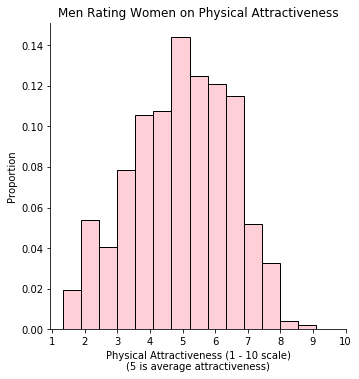

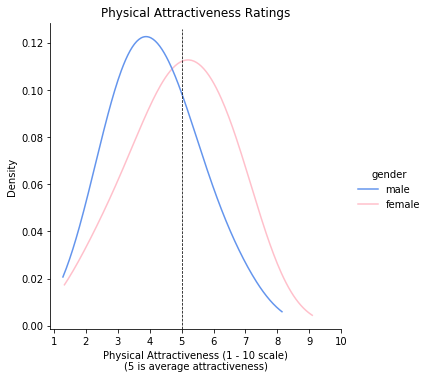







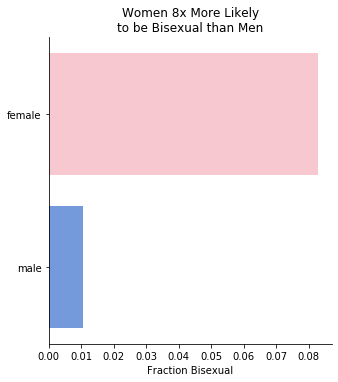














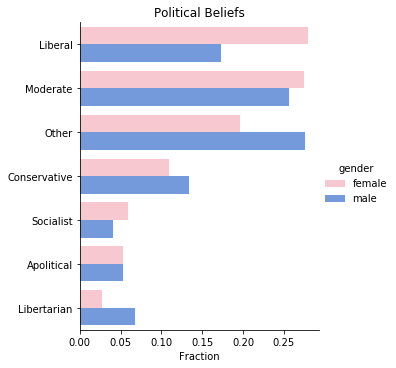

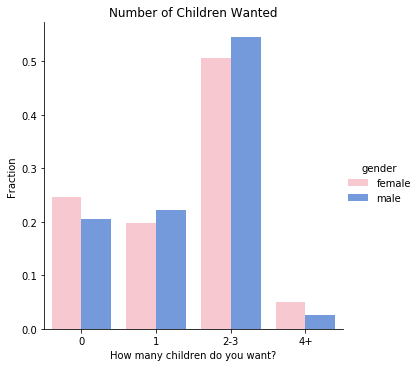
This further confirms a ton of thoughts I already had. There’s a widening date-ability gap between men and women. Not quite yet a crisis, but it’s certainly worrying. Large groups of lonely, horny and increasingly— angry men are dangerous.
What is the age distribution like for this sample?